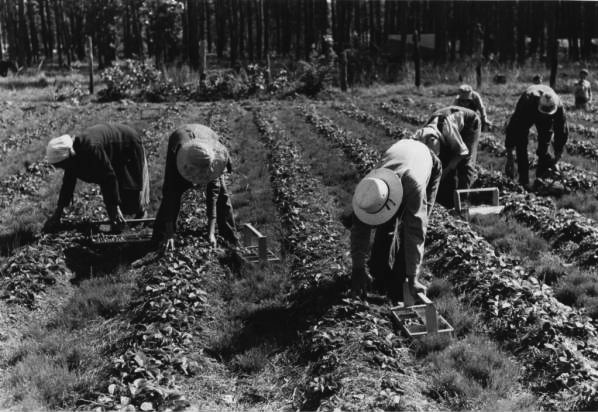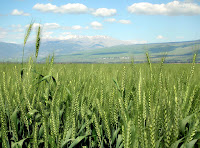Stopping at the charity field on the way back from pollinating, I noticed a ripening rye cover crop the next field over - and decided to look for my friend, ergot.*
I couldn't believe my luck! There were little black pods sprouting from rye spikes all over the edge of the field. This is a very exciting creature to a plant pathologist - and one that's had quite an impact on European history...
Tuesday, December 21, 2010
Tuesday, December 14, 2010
Waldsterben all over again?
Michelle tipped me off to yet another "all the bees are dying" article.
The new wrinkle in the story is a leaked EPA memo that suggests that Bayer CropScience's seed treatment, chlothianidin, was registered without sufficient proof that it didn't hurt bees. Aside from the fact that this registration was completed in 2004 and (according to the same article) this whole bee business started in the mid-1990s, I'm skeptical that any new pesticide is causing all this. We were SO much more indiscriminate and profligate with our agricultural sprays and industrial dumping in past decades (and with much more dangerous chemicals) than we are now - it seems a funny time for a problem to pop up. I haven't paid a lot of attention to the CCD story, but the persistent failure to identify a cause makes me wonder if the cause really is as simple as an anthropogenic chemical or exotic pathogen.
The new wrinkle in the story is a leaked EPA memo that suggests that Bayer CropScience's seed treatment, chlothianidin, was registered without sufficient proof that it didn't hurt bees. Aside from the fact that this registration was completed in 2004 and (according to the same article) this whole bee business started in the mid-1990s, I'm skeptical that any new pesticide is causing all this. We were SO much more indiscriminate and profligate with our agricultural sprays and industrial dumping in past decades (and with much more dangerous chemicals) than we are now - it seems a funny time for a problem to pop up. I haven't paid a lot of attention to the CCD story, but the persistent failure to identify a cause makes me wonder if the cause really is as simple as an anthropogenic chemical or exotic pathogen.
Thursday, December 2, 2010
Maize is a Machine
This is why farmers like hybrid seed. The parents on the left and right are inbred lines that have been self-pollinated for many, many years.* The two rows of much bigger plants in the middle are simply their hybrid offspring - they grow faster, produce higher yields and are tougher in the face of unfriendly environments.
Monday, November 29, 2010
Now I've Seen Everything
I was watching cable just now and came across Glenn Beck accusing Monsanto of being part of some kind of paranoid socialist conspiracy. This company, apparently, has teamed up with the tyrannical FDA to help Obama gain control of and destroy the American food system.
for some reason...
ooooooh! [read in spooky ghost voice]
I bet Monsanto's PR dept misses when they just sold flooring.
Saturday, November 20, 2010
The Nutrition-Industrial Complex
"cheez-its are not nearly as good as generic cheez-its,"
I posted on Facebook.
Dennis suggested I had bought low-sodium ones - though I was sure it was due to the presence of "real cheese" in the generic.
I posted on Facebook.
Dennis suggested I had bought low-sodium ones - though I was sure it was due to the presence of "real cheese" in the generic.
Tuesday, November 16, 2010
Which Clementines Taste Good?
Citrus season is here! Hooray!!!
I bought my first box of "clementines" and am already disappointed. and I've decided to do something about it...
I bought my first box of "clementines" and am already disappointed. and I've decided to do something about it...
Friday, November 12, 2010
The FAO made me do it!
I "attended" an email conference a year ago sponsored by the FAO:
Learning from the past: Successes and failures with agricultural biotechnologies in developing countries over the last 20 years.
I really enjoyed it. The vast majority of "presentations" were given by scientists working in the developing world and the topics ranged through sustainability, biotech and appropriate technology.
They've published the official summary of it now and asked the attendees to distribute it, so here you go.
(pdf)
Learning from the past: Successes and failures with agricultural biotechnologies in developing countries over the last 20 years.
I really enjoyed it. The vast majority of "presentations" were given by scientists working in the developing world and the topics ranged through sustainability, biotech and appropriate technology.
They've published the official summary of it now and asked the attendees to distribute it, so here you go.
(pdf)
Thursday, November 11, 2010
Climate Change and the Importance of Maintenance Breeding
Variety IR8 is the original "Miracle rice" of the 1960s. This carefully-crafted variety has a stunted, semi-dwarf phenotype, which increases it's harvest index (the proportion of grain biomass to total biomass), and allows it to resist lodging (falling over into the mud), even when heavily fertilized. As with wheat, the creation of dwarf varieties of rice played a major role in the enormous yield gains of the Green Revolution.
But now it's in trouble!
But now it's in trouble!
Wednesday, November 3, 2010
They took our jobs!
Mexican citizens may or may not be underbidding (and forcing down wages of) American jobs in the construction and service industries but they are definitely not taking U.S. farm worker jobs, as anyone in the agricultural sector can tell you.
Monday, November 1, 2010
How Great Fruits are Made
The AP's published a nice description of the stone fruit breeding operations of the eminent Floyd Zaiger of the California Central Valley. He's a great example of what hard working, creative and visionary plant breeders can accomplish over a long lifetime dedicated to their favorite plant - and he's impacted your life more than you know!
Friday, October 22, 2010
Stem Sells
The supermarket's now selling brussel sprouts still-on-the-stem. It's a pretty clever marketing tactic - makes people think they're fresh off the farm.*
You know how they've started selling tomatoes on the truss? It used to be a standard breeding trait to make sure the tomatoes came off the truss cleanly (stems can pierce stacked tomatoes). And now some varieties are bred to keep them on...
*Plus it's fun, which I won't argue with!
Tuesday, October 19, 2010
Cabbage Shortage!
 The Economist reports a major shortage of cabbage that is causing political unease in South Korea. The populace is apparently starting to freak out a little as the cost of a head of cabbage surpasses $10 (more expensive than pork!). Cabbage is eaten daily as the much-loved national dish, Kimchi. This excellent food is made by fermenting cabbage anaerobically in brine and plays a central role in Korean food culture.*
The Economist reports a major shortage of cabbage that is causing political unease in South Korea. The populace is apparently starting to freak out a little as the cost of a head of cabbage surpasses $10 (more expensive than pork!). Cabbage is eaten daily as the much-loved national dish, Kimchi. This excellent food is made by fermenting cabbage anaerobically in brine and plays a central role in Korean food culture.*Wednesday, October 13, 2010
Holland Infographics
 I just got back from Wageningen, NV.* The Netherlands is a very wet country, but we had excellent weather and I had a lot of fun meeting everyone at the headquarters. And such a cool town! Same population size as Ithaca or Davis, but with a denser downtown, older buildings and a much more bike-friendly infrastructure...
I just got back from Wageningen, NV.* The Netherlands is a very wet country, but we had excellent weather and I had a lot of fun meeting everyone at the headquarters. And such a cool town! Same population size as Ithaca or Davis, but with a denser downtown, older buildings and a much more bike-friendly infrastructure...
Thursday, October 7, 2010
GM corn helps farmers who don't use it
Everyone's been waiting for long-term studies of GM crops - and now we have one!
The European corn borer was accidentally released in the U.S. in 1917. In recent years, it's managed to cost farmers $1 billion each year. Transgenic Bt corn was introduced in 1996, largely in order to deal with this pest. Thanks to the enthusiastic adoption of farmers, over 60% of U.S. corn now contains the borer-killing Bt gene...
Tuesday, October 5, 2010
Sunday, September 26, 2010
Tuesday, September 21, 2010
Farm Blogs + Trade Mags
I just heard an NPR bit on an effort to establish a tea farm in California (Davis adjacent!). They have a blog too.
While I'm at it, here are some other cool farm blogs I've come across recently:
A Day in the Life of a Farm Vet...
Adventures in Agriculture
Agriculture Proud
Food for Thought
Griggs Dakota
Martin Family Farms
Shedding Light on Agriculture
Sitting in the Pasture...
Slow Money Farms
Starving off the Land
h/t: many from JP Loves Cotton
While I'm at it, here are some other cool farm blogs I've come across recently:
A Day in the Life of a Farm Vet...
Adventures in Agriculture
Agriculture Proud
Food for Thought
Griggs Dakota
Martin Family Farms
Shedding Light on Agriculture
Sitting in the Pasture...
Slow Money Farms
Starving off the Land
h/t: many from JP Loves Cotton
Sunday, September 12, 2010
Orange Mystery Dust
Wednesday, September 8, 2010
Monarch Caterpillar
 I took this picture of what appears to be a monarch butterfly caterpillar on an isolated milkweed plant in my parents' garden a few weeks ago. I was home over the weekend and checked the same plant. The milkweed was dried up and the seed heads gone to fluff and there was no sign of a chrysalis, so I don't know if the bug made it out alive.
I took this picture of what appears to be a monarch butterfly caterpillar on an isolated milkweed plant in my parents' garden a few weeks ago. I was home over the weekend and checked the same plant. The milkweed was dried up and the seed heads gone to fluff and there was no sign of a chrysalis, so I don't know if the bug made it out alive.Back in Oklahoma, September was the month that was full of monarchs; their migration pathways converged from all over the East as they approached their wintering grounds in Mexico.
Sunday, September 5, 2010
Thrown from a Moving Vehicle (legally)
 Only two objects can be legally dropped from a moving vehicle in California.
Only two objects can be legally dropped from a moving vehicle in California.Can you guess what they are?
h/t: my friend Chris (no cheating)
Monday, August 30, 2010
Time Magazine Fails Again
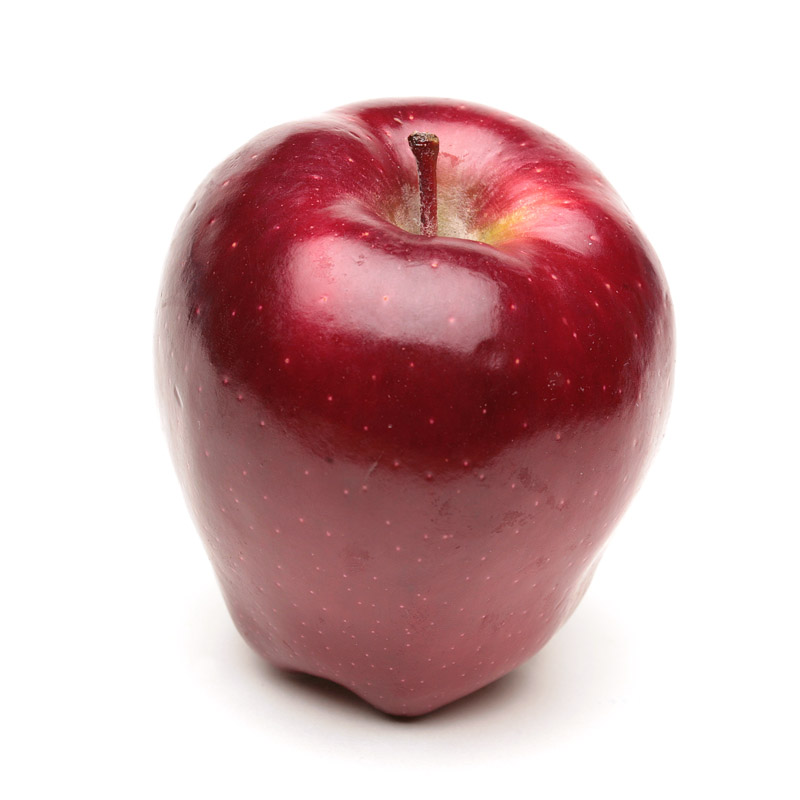 Time Magazine recently printed a pretty underwhelming article, "What's So Great About Organic Food?." It's such a disappointment when the major media picks up an important topic and completely fumbles it, as Jeffrey Kluger does in this piece.
Time Magazine recently printed a pretty underwhelming article, "What's So Great About Organic Food?." It's such a disappointment when the major media picks up an important topic and completely fumbles it, as Jeffrey Kluger does in this piece.
Monday, August 23, 2010
HFCS! iiieeeeee!!!!
The author relates that "a diet high in fructose has been shown to cause — or at least contribute to — hyperlipidemia, obesity, insulin resistance and cardiac disease." Cautioning that not only HFCS contains fructose, he summarizes:
Friday, August 20, 2010
Evolving Pesticide Resistance
 It's been estimated that genetic resistance to every pesticide that will ever be invented already exists in some microbe in some field, somewhere in the world (simply because there are so many individuals of each species). If you invent an incredible new spray that kills, say, Phytophthora infestans, you'd know that somewhere in the world there is a little P. infestans mycelium or spore that is already resistant. If you start spraying thousands and thousands of acres with your new pesticide, you may have a season or a few without late blight, but it's only a matter of time before this little guy gets into your field and finds a smorgasbord all for himself.
It's been estimated that genetic resistance to every pesticide that will ever be invented already exists in some microbe in some field, somewhere in the world (simply because there are so many individuals of each species). If you invent an incredible new spray that kills, say, Phytophthora infestans, you'd know that somewhere in the world there is a little P. infestans mycelium or spore that is already resistant. If you start spraying thousands and thousands of acres with your new pesticide, you may have a season or a few without late blight, but it's only a matter of time before this little guy gets into your field and finds a smorgasbord all for himself.Monday, August 16, 2010
Friday, August 13, 2010
Tuesday, August 10, 2010
We(eat)ding
 The dominance of weeds in our community garden plots is truly unbelievable. You'd be forgiven for mistaking the whole thing for a crop of oilseed rape. Although several of the plots are well-tended and fenced (can you see the fences?), the majority of the field is completely yellow with Brassica flowers.
The dominance of weeds in our community garden plots is truly unbelievable. You'd be forgiven for mistaking the whole thing for a crop of oilseed rape. Although several of the plots are well-tended and fenced (can you see the fences?), the majority of the field is completely yellow with Brassica flowers.
Friday, August 6, 2010
Panis Ex Machina
Tuesday, August 3, 2010
Development FAIL
 We've had lots of 90F days in the field and the corn is popping! I've heard that at the height of a Midwestern summer, the corn grows so fast you can literally hear the plants popping (as air spaces in the internodes open up).
We've had lots of 90F days in the field and the corn is popping! I've heard that at the height of a Midwestern summer, the corn grows so fast you can literally hear the plants popping (as air spaces in the internodes open up).Upstate NY isn't exactly in the record-breaking 300 bushel club (and in fact a lot of our corn gets fed to dairy cattle whether it produces grain or not) but we've been very busy de-tasseling and pollinating all the same.*
Saturday, July 31, 2010
WOW!
 Now, this is what I call huitlacoche!
Now, this is what I call huitlacoche!I've seen lots of cool stuff in our maize research fields, but this is definitely this year's highlight so far! Some of the diversity panel landraces are particularly susceptible to corn smut, but none can hold a candle to our sweet corn varieties. This specimen was wrapped in a husk twice as big as any actual ears.
Monday, July 26, 2010
Down with Lawns!
 Lots of anti-lawn buzz on my reader today...
Lots of anti-lawn buzz on my reader today...Just came across the Lawn Reform Coalition. It looks interesting...
I especially like their listing of alternative, more sustainable species. Personally, I prefer grass that goes brown in the winter. It's more seasonal and reminds me of my former homes out West. At any rate, I signed up for their newsletter and will be keeping an eye on them.
Sunday, July 25, 2010
Farming on Luck
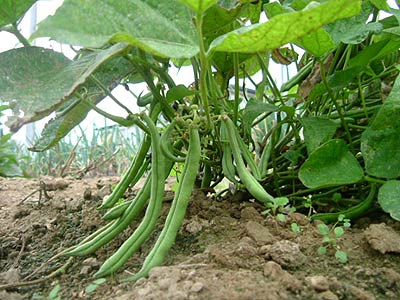 Well, we got our green beans harvested last Friday. I was in the corn fields at the time, but I heard they were able to pick up about 1,300 lbs of beans from a total yield of about 1,800 lbs.
Well, we got our green beans harvested last Friday. I was in the corn fields at the time, but I heard they were able to pick up about 1,300 lbs of beans from a total yield of about 1,800 lbs.A fair number of plants were heavy with recent rain and sagged under the reach of the harvester. We could have waited for the field to dry some, but thanks to weather forecasting we didn't - more rain was on its way over the weekend. The next chance we could get into the field, we'd likely have found the beans woody and inedible.
Still, not a bad donation to the food bank!
Thursday, July 22, 2010
Identifying Small Grains
 Small grains (wheat, barley, rye and oats) can be distinguished by leaf morphology.
Small grains (wheat, barley, rye and oats) can be distinguished by leaf morphology.culm - the stem
leaf sheath - the part of the leaf that stays wrapped around the culm
leaf blade - the part of the leaf that sticks out (and looks like a leaf)
ligule - a thin collar on the base of the blade that wraps around the culm
auricle - projections from the base of the blade that may wrap around the culm
Ligules and auricles in particular have taxonomic value for small grains...
Friday, July 16, 2010
The People's Garden: part II
 Well, all the plants are in the ground in our food bank garden.
Well, all the plants are in the ground in our food bank garden.It was pretty fun listening to all the real horticulturalists hash out the details to our plan, with frequent reference to the classic Knott's Handbook, which is definitely now on my wishlist. Those guys really know production ag - especially through their professional and familial ties to our local upstate farmers.
So here's our acre: It was winter cover-cropped in rye, the farm crew tilled it in, built up beds and lay plastic mulch (picture 2 x 200' strips of black plastic garbage bags) over granular fertilizer. We decided to take our chances and skip the irrigation tape. The whole thing was split into four blocks - each containing the appropriate number and width of rows to allow a tractor with 20' booms to reach everything. Each block needed to be limited to one crop family in case we need to spray pesticides later (which are regulated by crop family).
Tuesday, July 13, 2010
Recycling means it never happened - a rant
The NY Times has a great article about environmentalism in the Fashion & Style section: "Buying into the Green Movement"
Basically it describes a trend I've gotten very tired of - people using "eco-conscious" choices to justify indulgent consumption.
Basically it describes a trend I've gotten very tired of - people using "eco-conscious" choices to justify indulgent consumption.
- It's not good for the environment to throw out perfectly-good item A so that you can replace it with more efficient and eco-friendly item B.
- Composting food does not mean you didn't waste your leftovers.
- Buying "biodegradable" stuff is worse than meaningless.
- Recycling doesn't magically mean that you never consumed that item in the first place... *cough* reduce, reuse *cough*
- Using cloth grocery bags is pointless if you're just going to buy plastic bags to throw your garbage and recycling in anyway
- Bottled water is stupid unless your town has a specific problem with contamination. You weren't too good to drink out of the hose as a kid, why are you too good for a faucet now?
- You can't justify burning jetfuel on overseas vacations because it "helps people from different cultures understand each other."
Sunday, July 11, 2010
Uniformity.
 Uniformity is important in agriculture.
Uniformity is important in agriculture.It can make the farmer's life pretty tough when plants in different parts of their field ripen at different times. You can't wait forever for every last plant to ripen - you need to harvest before bad weather sets in or you have to plant your next crop. Inevitably, some plants will fail to ripen (or over-ripen) by the time you get in to harvest.
Saturday, July 10, 2010
Fall, foreshadowed
Thursday, July 8, 2010
Perennial Grain Links
Progress in perennial wheat?
I know it's a tough problem, but another 10 years sounds like an eternity.
It seems like people have been working on this problem forever, but I suppose to an early career scientist, "forever" isn't a very long time...
I'll have to tide myself over with "Small-Scale Grain Raising," which ironically, and inexplicably became available on my library queue after mouldering forgotten for over a year...
I know it's a tough problem, but another 10 years sounds like an eternity.
It seems like people have been working on this problem forever, but I suppose to an early career scientist, "forever" isn't a very long time...
I'll have to tide myself over with "Small-Scale Grain Raising," which ironically, and inexplicably became available on my library queue after mouldering forgotten for over a year...
Wednesday, July 7, 2010
Tobacco!
It's also one of the most-studied and best understood of all plants. 3,000 chemicals have been identified in the plant itself and 4,000 have been identified in its smoke!
Nicotiana tabacum is the main commercially-grown species and is thought to be descended from some combination of wild species such as N. sylvestris (the gardener's woodland/night-scented tobacco). Many of these wild Nicotiana species, which are found around the world, are also able to accumulate nicotine and related alkaloids just like N. tabacum.
Friday, June 25, 2010
Vanishing Veterinarians
 I shouldn't have been so surprised to learn that the same trends I've seen in plant ag research are going on over in the veterinary buildings.
I shouldn't have been so surprised to learn that the same trends I've seen in plant ag research are going on over in the veterinary buildings.I hear that the famous vet schools are all replacing their large animal vets with medical mouse scientists as rapidly as they can get the old dudes to retire. We still have a big chicken research center here in Upstate NY, thanks to the influence of the professor who invented the nugget, but apparently the only other remaining U.S. poultry programs are in Arkansas and Delaware. I guess all the ag schools are fighting to climb aboard the NIH's cancer train. And I suppose no sensible student is willing to spend one or two hundred thousand dollars to learn how to birth calves in the middle of the night...
Thursday, June 24, 2010
Modern Ag Links
Organic pesticides are often less green than synthetics, and industrial ag may save us from climate change.
The new face of modern ag - technological AND sustainable.
Pick your own damn oranges then!
The new face of modern ag - technological AND sustainable.
Pick your own damn oranges then!
Tuesday, June 22, 2010
Best Atrium Ever
The entrance to the research institute I work at has a really nice integration of work space and the natural world.
They rotate different flowers and trees between indoor soil beds and a greenhouse to keep them fresh. Occasionally they have to cut down trees when they get big enough for their roots to damage the foundation. There's a bubbling fountain under the cement steps and some kind of vine covers all four walls up to the second story skylights.
There's a bubbling fountain under the cement steps and some kind of vine covers all four walls up to the second story skylights.
The orchids are my favorite (though this may change if they replace that palm with a banana!). The greenhouse is packed with bark-mounted orchids of all sizes, which are continually rotated when blooming to various hooks dangling from ceilings and mounted on walls. The more fragrant species manage to perfume the entire first floor of the building.
It's pretty awesome.
They rotate different flowers and trees between indoor soil beds and a greenhouse to keep them fresh. Occasionally they have to cut down trees when they get big enough for their roots to damage the foundation.
 There's a bubbling fountain under the cement steps and some kind of vine covers all four walls up to the second story skylights.
There's a bubbling fountain under the cement steps and some kind of vine covers all four walls up to the second story skylights.The orchids are my favorite (though this may change if they replace that palm with a banana!). The greenhouse is packed with bark-mounted orchids of all sizes, which are continually rotated when blooming to various hooks dangling from ceilings and mounted on walls. The more fragrant species manage to perfume the entire first floor of the building.
It's pretty awesome.
Friday, June 11, 2010
Is Sunberry Poisonous?
 Sunberry (aka Wonderberry) is a little purple berry in the nightshade family (Solanaceae), bred by Luther Burbank himself 100 years ago (Solanum guinense x villosum). I grew it last year both on my deck and in my research plot alongside another novelty purple-berried Solanum, Garden Huckleberry (S. melanocerasum or scabrum?).
Sunberry (aka Wonderberry) is a little purple berry in the nightshade family (Solanaceae), bred by Luther Burbank himself 100 years ago (Solanum guinense x villosum). I grew it last year both on my deck and in my research plot alongside another novelty purple-berried Solanum, Garden Huckleberry (S. melanocerasum or scabrum?).The taxonomy of this family is far from figured out. Tomato (which you'd think we'd understand pretty well!) was removed from the genus "Lycopersicon" to join its potato and eggplant sisters in "Solanum" just a few years ago. The various species of "nightshade" are a total mess - no less because it's one of those names that Europeans threw around pretty loosely as they discovered new plants.
Wednesday, June 9, 2010
Rooftop Harvest
Eagle Street Rooftop Farms in Brooklyn seems to be off to a great start.
Check out the links to their articles in The Atlantic.
Check out the links to their articles in The Atlantic.
Short Corn on the Field Edge
 You may have noticed how corn plants growing on the edge of a field always seem to be shorter than their neighbors. One of our local grad students proposed a particularly clever hypothesis today to explain it.*
You may have noticed how corn plants growing on the edge of a field always seem to be shorter than their neighbors. One of our local grad students proposed a particularly clever hypothesis today to explain it.*Which got me thinking. I'd always assumed corn plants on a field's edge were shorter because they had greater access to light. Recently one of the blogs I follow proposed it was due to thigmotropism.** Thigmotropism is basically a plant's sense of touch. The physical push of wind makes many plants grow stouter than they otherwise would and is why the same type of tree gets shorter and craggier the farther up a mountainside it's found (not, as one hack "scientist" used to propose at forestry meetings, due to historic pruning acorn cultivation by Amerindians).
Monday, June 7, 2010
Spring vs. Winter Wheat
For a crop that looks so homogeneous, there's an awful lot of diversity in wheat.
Two major species are grown in the U.S. - common bread wheat (Triticum aestivum) and durum wheat (T. durum) - with little to no cultivation of more primitive einkorn, emmer and spelt species.
Durum wheat is used to make semolina flour (for pasta), and (in the U.S.) is pretty much just grown in North Dakota. In the past, this crop was intentionally exposed to radiation (mutation breeding) in order produce novel genetic variation. The resulting mutation improved pasta quality.
Common bread wheat is commonly classified as hard or soft, red or white and winter or spring. As with all crops, the quality of the final product is heavily influenced by the genetics and the environment responsible for a given harvest. Accordingly, mills commonly choose their varieties carefully and mix batches grown in different fields to balance out the chemistry of the final product.
Two major species are grown in the U.S. - common bread wheat (Triticum aestivum) and durum wheat (T. durum) - with little to no cultivation of more primitive einkorn, emmer and spelt species.
Durum wheat is used to make semolina flour (for pasta), and (in the U.S.) is pretty much just grown in North Dakota. In the past, this crop was intentionally exposed to radiation (mutation breeding) in order produce novel genetic variation. The resulting mutation improved pasta quality.
Common bread wheat is commonly classified as hard or soft, red or white and winter or spring. As with all crops, the quality of the final product is heavily influenced by the genetics and the environment responsible for a given harvest. Accordingly, mills commonly choose their varieties carefully and mix batches grown in different fields to balance out the chemistry of the final product.
Sunday, June 6, 2010
Gardening a Forest
 I grew up (mostly) in an old farmhouse in Delaware. The three foot thick stone walls that make up the core of the house are probably 200+ years old, and from the basement, you can see that the main floor is supported by whole, rough-hewn tree trunks. The farmland was bought up and developed before I was born, but field stone walls and small building foundations are still present, scattered in the surrounding acres of private and state land.
I grew up (mostly) in an old farmhouse in Delaware. The three foot thick stone walls that make up the core of the house are probably 200+ years old, and from the basement, you can see that the main floor is supported by whole, rough-hewn tree trunks. The farmland was bought up and developed before I was born, but field stone walls and small building foundations are still present, scattered in the surrounding acres of private and state land.Mirroring a century-long trend that has occurred throughout the Eastern U.S., the original farm was abandoned and now-maturing secondary forests grew up in its place. The U.S. now has more forest than anytime since European colonies were established.
The forest on and around my parents' property is in decline. The suburbanites have been neatening up the woodlots that snake between all their plots, cutting down ugly and dangerous trees and preventing the re-establishment of many seedlings. Many of the largest trees are falling now. The pro arborists say the giant boulders half-hidden in the soil compromise the trees' hold, and I imagine the loss of their neighbors increases windthrow.
Wednesday, June 2, 2010
Anthesis
 Anthesis = flowering.
Anthesis = flowering.This term is used a lot with grasses (e.g. grains) to denote when the anthers poke out of the bracts to release pollen. I grabbed this example at the end of a run. A bunch of the anthers fell off already, but their bright yellowness was striking - especially en mass on the roadside. I've seen few grasses with such dramatic flowers.
Tuesday, June 1, 2010
New running route, New plants to learn
 I just went for a walk along the country road I now live off of (this one's paved). It'll make for a nice running route. It's lined by active ag fields (some run by the University) instead of fallow pastures and has a number of wildflowers and weeds that I already don't recognize. There are also at least 4 grasses, which I won't even attempt to ID unless I'm given reason to.
I just went for a walk along the country road I now live off of (this one's paved). It'll make for a nice running route. It's lined by active ag fields (some run by the University) instead of fallow pastures and has a number of wildflowers and weeds that I already don't recognize. There are also at least 4 grasses, which I won't even attempt to ID unless I'm given reason to.I was captivated by the tall, rippling roadside grasslands I saw in southern Virginia this past weekend (they reminded me of my childhood Plains - there were even some clumps of prickly pear!). I was all ready to post a rant blasting PA for their ugly, ragged mowed highway corridors when I climbed north into Harrisonburg and the tall grasses gave way to short ones and scrubyness - so I guess it's not just obnoxious landscaping's fault. I don't know if the soil/climate changed or the southern end of 81 is heavily seeded by the local pasture grasses (the ecoregion map provided few clues) but I'll hopefully have the presence of mind next time I'm down there to grab some flowers to ID.
I have the means: a 1935 copy of Manual of the Grasses of the United States.
Monday, May 24, 2010
Beware the Grass Pea
 There's been a big uptick in grass pea consumption in recent years - with accompanying paralysis (especially in children).
There's been a big uptick in grass pea consumption in recent years - with accompanying paralysis (especially in children).Grass pea (Lathyrus sativus*) is a crop of last resort. It's commonly grown from Southwest Asia through the eastern Horn of Africa, where it's mostly used as livestock forage. It has tremendous resilience in the face of environmental stress and pestilence and is often the only thing left standing after severe droughts and civil wars. Grass peas taste good, are full of protein, can grow in terrible soil and fix nitrogen, however, they also produce a potent neurotoxin, ODAP, which causes paralysis of the lower limbs when consumed in excess over extended periods.
It's a real tragedy, but thankfully it's one that science and crop biodiversity can do something about.
ICARDA, a research station of the international agricultural science organization, CGIAR, is working on screening germplasm from all over the region to find locally-adapted landraces with very low levels of ODAP. When I first heard about this story, I wondered why they didn't just use mutation breeding or genetic engineering to knock out the toxin altogether instead of just trying to find low-toxin ones, but apparently the toxin plays an important role in the grass pea's stress tolerance.
It's a pretty simple project that could make a really big difference.
*Sweet pea is in this genus
Wednesday, May 19, 2010
an Epiphyte in New York
 I was admiring the big, broad trees along our campus' main road today when I noticed some small, non-lobed leaves coming out of one of the oaks. On further inspection, what appeared to be a 3-foot tall cherry tree was growing out of the main crotch, nearly 10-feet above the ground!
I was admiring the big, broad trees along our campus' main road today when I noticed some small, non-lobed leaves coming out of one of the oaks. On further inspection, what appeared to be a 3-foot tall cherry tree was growing out of the main crotch, nearly 10-feet above the ground!I wonder what other creatures may be hidden up there...
(besides the masses of tent caterpillars that is...)
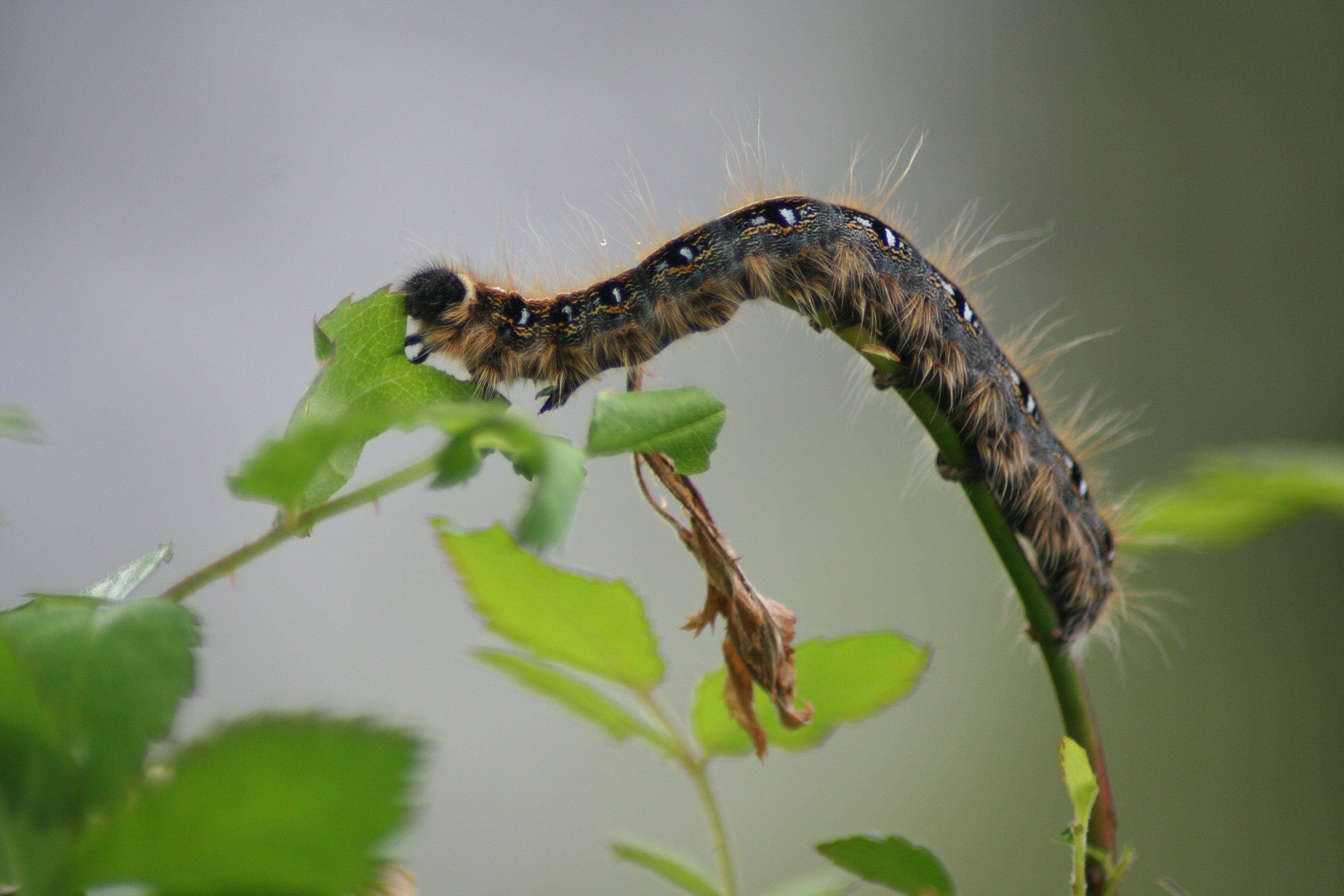
Monday, May 17, 2010
Chinese GM Cotton increases Fruit Pest
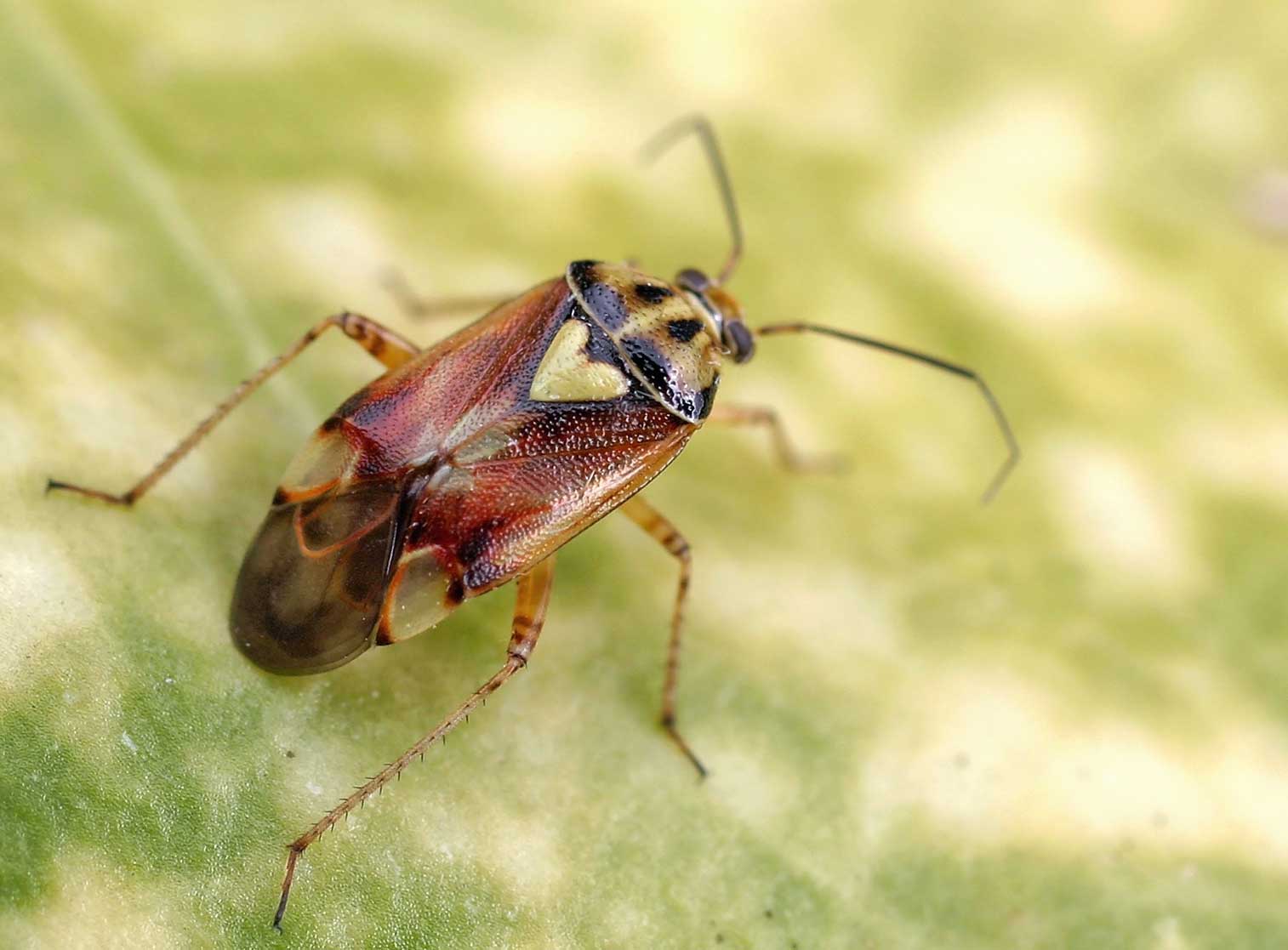 I imagine there will be some hoopla over this new Science article, so here's the cliff notes version:
I imagine there will be some hoopla over this new Science article, so here's the cliff notes version:- Cotton bollworm was a serious pest in China and was controlled with pesticide sprays
- Transgenic Bt cotton was introduced as a better management strategy for bollworm
- In the absence of regular sprays, a minor pest (the mirid bug) has become a real problem
Kudos to the Chinese ag scientists for being on top of this! I hope they can come up with some cheap and safe solutions for their farmers.
Sunday, May 16, 2010
Our Carcinogenic World
It's a big part of who I am to scoff at people who cling to new fears. My grandparents didn't need to drink filtered water and I'm sure not gonna start that as a new tradition.
However, a recent On Point episode kinda freaked me out. I normally don't pay much attention to environmental alarmists, but my attention was snagged when one of the guests (who was arguing that our world is contaminated) dismissed the blanket assertion of a caller that buying organic food was a reliable way to protect yourself from toxins. They also gave the specific example that some municipalities treat their drinking water such that it becomes contaminated with carcinogens - and that you should filter your water.
I guess the only options are heavy-handed regulation or living in a neurotic bubble?
argh..
Wednesday, May 12, 2010
a Better Steak
Tuesday, May 11, 2010
Girls make better Gatherers
 Though men may be better at reading maps and finding randomly hidden objects, a new study suggests that women are better at remembering routes to known objects - i.e. men are better at hunting and women are better at gathering.
Though men may be better at reading maps and finding randomly hidden objects, a new study suggests that women are better at remembering routes to known objects - i.e. men are better at hunting and women are better at gathering.The study has a neat design: they saddled pairs of indigenous Mexican men and women with GPS and activity monitors and then sent them out to collect mushrooms. Women were much more efficient foragers - they collected the same amount of mushrooms as the men but used a whole lot less energy (because they presumably knew where they were going). Women also found a greater variety of mushrooms from more sites (collecting from small patches of mushrooms). Meanwhile, the men ran all up and down the mountain, wasting a ton of energy looking for motherlodes.*
I'm always a little skeptical of these evo-psych Just So Stories, but it's interesting all the same (and it matches my personal experience!).
h/t: MycoRant
*Hopefully they controlled for confounders - e.g. how much time men and women usually spend mushroom hunting in this society. I don't have access to the article...
Monday, May 10, 2010
The Garden Plan!
 My 20' x 20' community garden plot is up and running. This picture was taken last Thursday - note that our trees still aren't leafed out completely. It actually snowed as recently as this past Sunday.
My 20' x 20' community garden plot is up and running. This picture was taken last Thursday - note that our trees still aren't leafed out completely. It actually snowed as recently as this past Sunday.North Neighbor was planting onions with his son when I dropped sweet corn in dual rows along the North and South borders (I'll be hand-pollinating them). Our frost free date isn't for another week yet, but the weather when I planted was consistently hot - though of course now they're forecasting hard frosts for tonight and maybe tomorrow, so we'll see what happens. I sowed peas a few days before the corn, but hopefully they won't emerge for another 2 days. My salad greens and carrots were sowed two weeks ago, when I raised the deer netting. I'm not too worried about them though - I had dropped some seed in my deck planters nearly a month ago, and all have survived several frosts so far.
I didn't take West Neighbor seriously when she said that weeds would become a big problem. I know a lot of people will abandon their plots to chest-high weeds later in the summer, seeding the rest of us - but I don't plan on having any bare soil by then. In another few weeks I'll transplant in fall broccoli and warm weather stuff - beans, locally-adapted melons and a panel of tomatoes from an amateur breeding project.
Stopping by after the first post-till rain last week, the problem became more obvious. The whole field had a slight green sheen of millions of tiny sprouts. It won't be much of a problem when I transplant in larger plants, but the carrot and salad subplot I sowed two weeks ago is an emerging nightmare. I'm gonna have to take my own advice to properly identify my salad greens. Maybe this is why other people built up raised mounds of compost and dirt to plant in.
Good thing I actually planted in furrows for once...
Subscribe to:
Comments (Atom)






